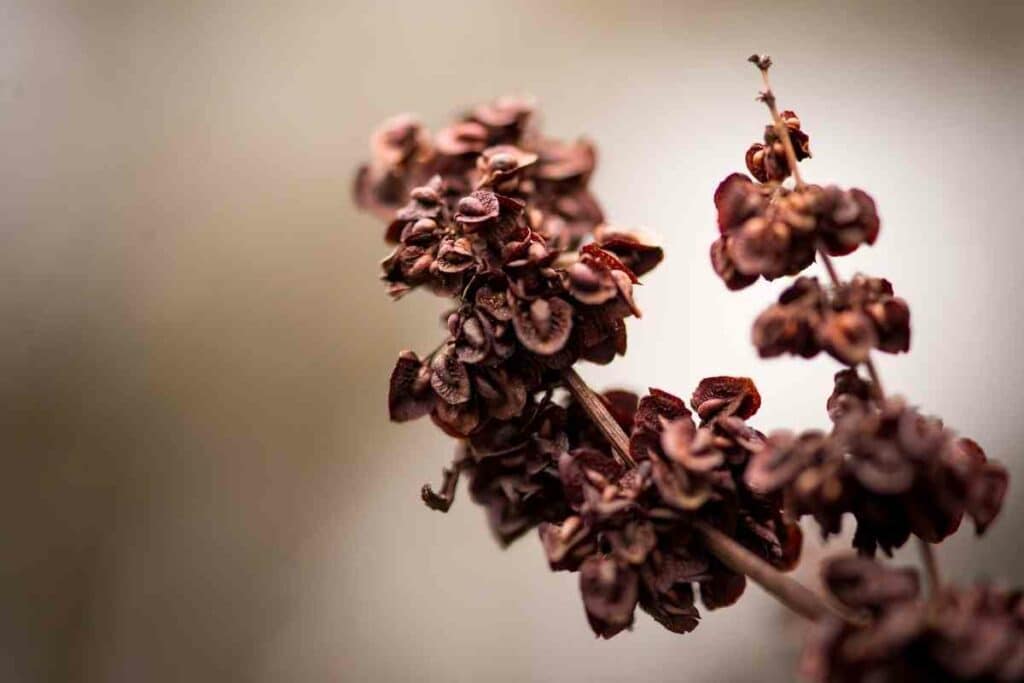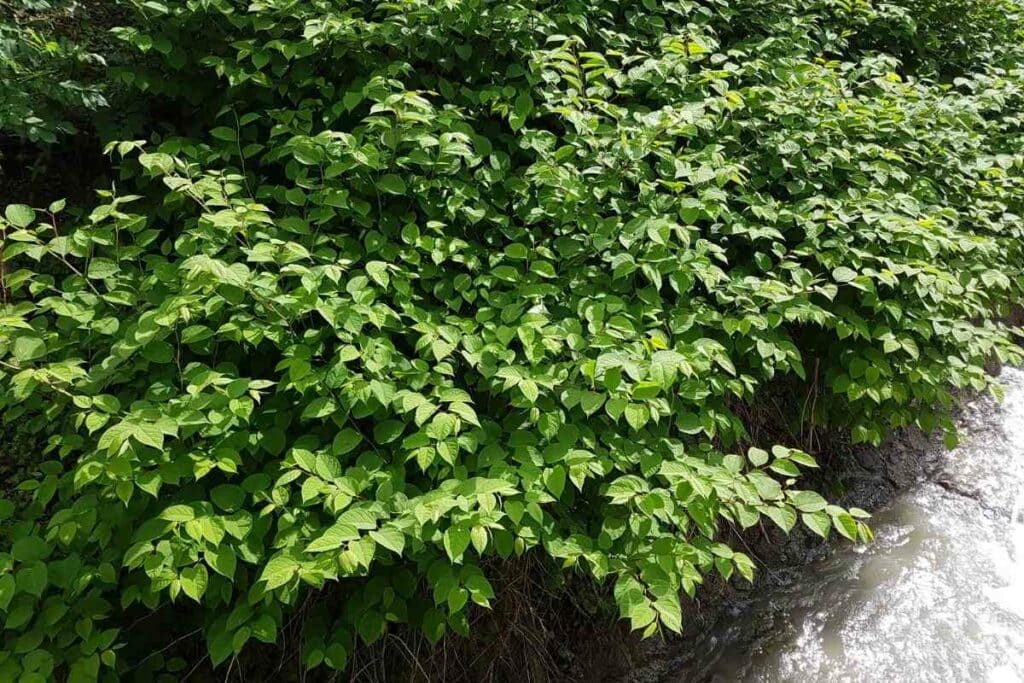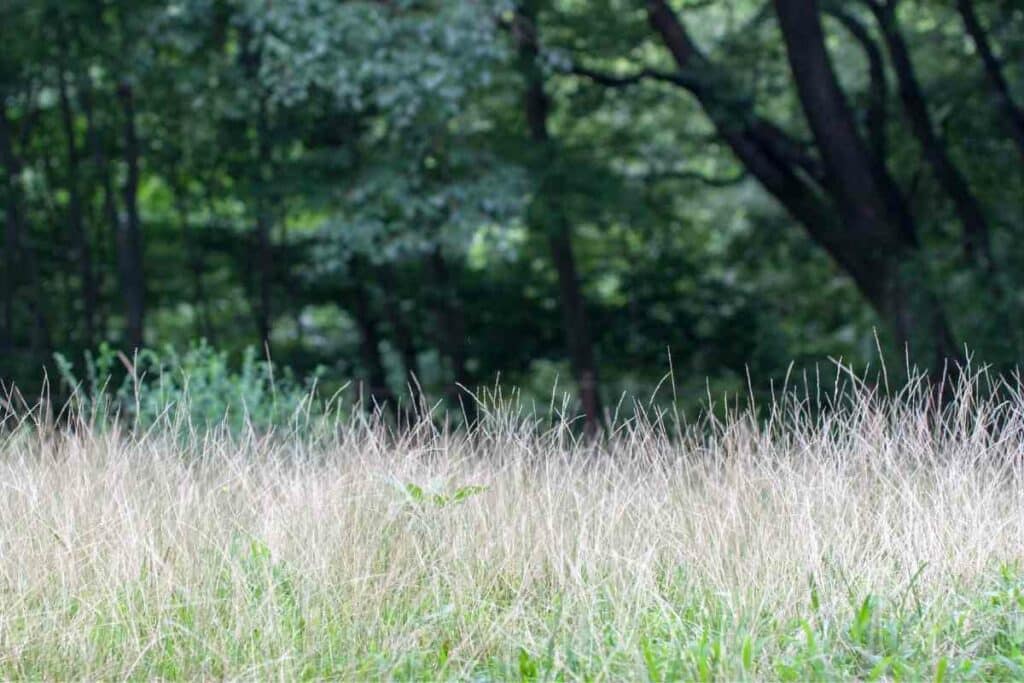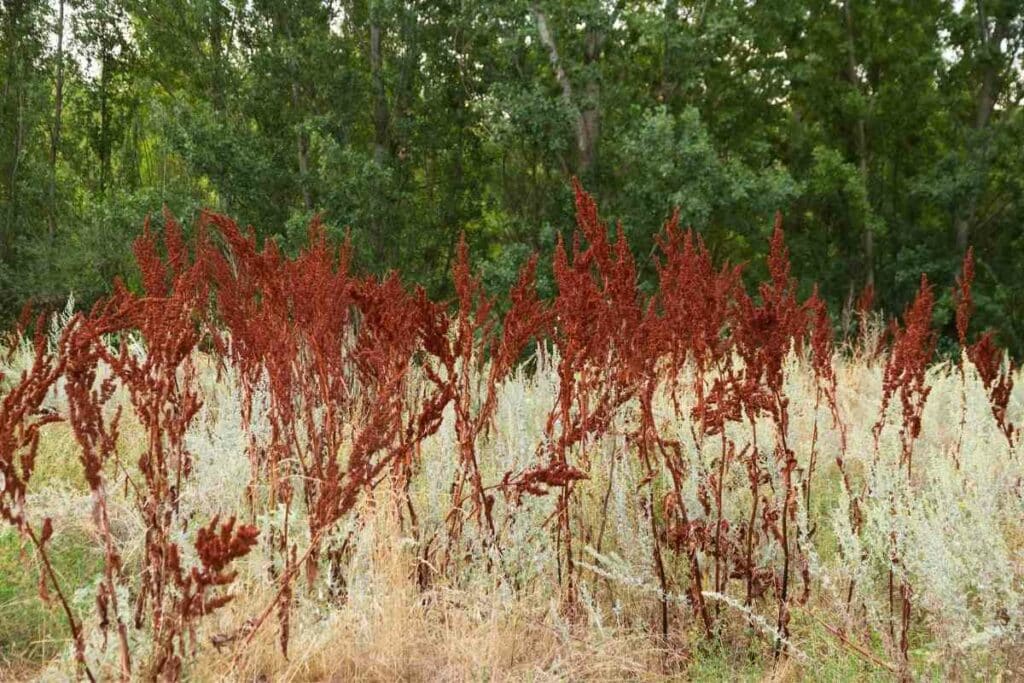Relentlessly ubiquitous survivors of the botanical world, weeds are an unavoidable annoyance for every gardener.
Existing in over 8000 different species, they pervade landscapes, spring through cracks in the sidewalk and root themselves high up on the sides of buildings.
Competing with cultivated plant life, the battle between gardeners and the wild weeds rages on.

They spring up out of nowhere, strangling the roots and stems of other plants and invade flower beds, lawns and pretty much anywhere else.
They are so difficult to control, at times, that in 2018 the weed-killing industry was worth over a whopping 28 billion dollars and, is only expected to rise.
What to Expect: New England is home to various commonly spotted weeds. Here we will overview the seven most commonly found in New England gardens.
1. Poison Ivy (Anacardiaceae)
Aptly named, Poison ivy is part of the Sumac family. They produce a poisonous phenol, named Urushiol.
Dwelling in various habitats, such as woodlands, hedges, roadsides, lakes, and riverbanks, Poison ivy thrives in both shaded and sunny areas.
So, it is located all over New England and is very common in gardens.
Not only found in but also native to New England, this incredibly adaptable plant can even survive in low-quality soil which is not even rich in minerals and nutrients.

It assimilates its environment and adapts in order to survive. An annual weed, it also stays active throughout the Fall.
A form of popular wildlife nutrition, Poison ivy produces off-white berries which many forms of wildlife then consume and defecate seeds – dispersing them – aiding the plant’s survival.
Berries are not this plant’s only defining characteristic.
It also produces unique trios of leaflets, along the fuzzy, rope-like vine.
Each glossy, green leaflet can range in size from 4-8cm in length and it produces small clusters of flowers, in Spring, which are usually a yellowy green colour.
Leafage begins with a mixture of red and green and at the end of its cycle, in the Fall, each goes from their trademark glossy green to a beautiful burnt orange shade.
So, this poisonous plant is easily identifiable – which is fantastic, considering that over 80% of people react to contact by producing an itchy, red rash of searing blisters.
Don’t Forget: Should you encounter Poison ivy, protect yourself! Or reap the painfully uncomfortable consequences.
2. Ground Elder (Aegopodium podagraria)
Also known as Goutweed, Ground Elder is another commonly found weed in New England and, like grasses, they produce rhizomes – which are subterranean stems – that help the plant spread, via self-replication.
This perennial plant resides in the same family as the carrot (Apiacae), but, unlike carrots, these are also known as the Farmers’ Plague because they are famously difficult to eradicate.

Produced leafage is triangulated, consisting of 3 groups of 3 leaflets – each spiked around the edge.
Colours are ranging and leaflets can be individually polychromatic: from shades of lighter green to bluish with off-white, spikey fringes.
Stems can grow up to around 100cm in height, even with only dappled, intermittent sunlight.
With consistent sunshine, they produce multiple compound umbels of small, white flowers containing 5 petals.
These are common in many gardens and spread quickly, in every direction.
Keep In Mind: Considered to be acutely invasive, they are botanical bullies, pushing out cultivated plants and swamping patches of land. Roots have even been found more than 25ft beneath ground level!
3. Japanese Knotweed (Fallopia japonica)
Another rhizome producing, self-replicating menace, Japanese knotweed is the most commonly found type of its kind, in the western world.
Its root system grows rapidly and has the potential to destroy building foundations, crack through cement and even invade people’s homes.

Its stems, not unlike Bamboo canes, reach from deep, subterranean rhizomes and grow up to and over 2m in length. They can be in excess of 2 inches in circumference and present with tiny, purple, speckled spots.
A suffocating plant, Japanese Knotweed overgrows all the plants in a new habitat and drowns them out; it can be devastating to a garden.
Because of its seriously catastrophic potential, any landowner in the UK (for example) is bound by legislation, to prevent and control the spread of this botanical hazard. Its leaves are distinctively heart-shaped and can be around 14cm long.
On the border of both Summer and Fall, small stems full of small, off-white flowers are produced but in Winter it recoils and merges with the ground.
4. Crabgrass (Digitaria)
Also common to New England lawns, Crabgrass is an annual weed which perishes in Winter after generating more than one hundred thousand seeds, for the subsequent Spring season.
If you catch them and remove clumps, prior to this, then you can potentially prevent them from returning the following year.

While sources state that this plant is harmful, very many more state the exact opposite.
It is considered more of an eyesore than a menace, yet lawn-proud gardeners battle this weed, year in-year out.
At full maturity, they generate tall, forked seed pockets – disturb these and you will disperse seeds yourself.
Keep an eye out for them and catch them early, when the seed pockets are closed, they are safe to simply pull out of the ground.
Clumps are easily spotted and will reach beyond your lawn, appear a darker shade of green and resemble the circular shape of a crab, hence the name.
They produce elongated clusters of flowers and exist in hairy and smooth varieties.
5. Giant Foxtail (Setaria faberi Herrm.)
A noxious weed, like Poison ivy, Giant Foxtail is hazardous and produces copious amounts of a compound called Calcium Oxalate.
However, this is not the main hazard with this plant. Its seeds are incredibly dangerous.

They can literally burrow under skin and because of the way that they are barbed, they work their way deeper.
If ingested, they can burrow through the body’s vital organs, causing punctures, infections, and many other problems.
More likely to affect pets, in this way, it would be prudent to keep a watch out for this invasive plant.
Common in many areas across the USA, this clumping annual weed produces leaf blades of over 40cm in length and around 3cm in width.
The name is attributed because of its high stems, tipped with a seed head starkly resembling the tail of a fox.
Have You Noticed: These stems can reach up to 4ft tall and make the Giant Foxtail very easy to distinguish from surrounding plant life, due to their seed heads being hairy – similar to those of Barley.
6. Common & Giant Ragweed (Asteraceae artemisiifolia)
Additionally found throughout New England and both a common allergen and native North American plant, Ragweed causes symptoms not unlike some of those produced by the common cold:
- bunged sinuses
- dripping nasal cavities
- itching eyelids
- and sneezes
A flowering plant, it begins to pollenate in July but in a lot of places in the country, this does not occur until August time.
The plant is than at its optimum in the middle of September. As a result, it can even linger on into midwinter.
It grows in 49 states across the USA, mainly due to its incredibly effective pollination process.

On the wind, billions of particles are released from each of the plant’s small, green flowers. Leaves are lobed and spread apart; stems are hairy and can grow up to approximately 100cm tall.
Giant Ragweed (Asteraceae trifida), on the other hand, can grow up to just short of 20 feet high!
7. Curly Dock (Rumex Crispus)
A form of decent forage for humans, Curly Dock is a perennial weed which produces edible, green leaves that can be pied with flashes of red and taste best in their early stages of growth.
Bitter, when fully grown, leaves are lengthy and not very wide (12 inches by 2.5 inches), with a light green spine and deep green flesh.

Distinctively curly, or at least wavy, they are aptly named for these long, rippled leaves which get smaller, the higher they reach up the stem.
This particular weed is apparently little-known but has a number of beneficial uses.
Not only is it considered a common garden weed but it is also edible from seed to plant and is somewhat useful, medicinally.
It gives rise to stems reaching up to 5ft tall and flowers range from yellow to pink in color. They are formed in grouped clusters containing sometimes over 20, growing close to and around the stem.
Final Thougths
As you can see there are a number of weeds native to New England but most of them are also common in other parts of the USA. Not just specific to New England.
Some are worse than others and will need specialist treatments so be careful to identify them correctly before starting any treatment.


